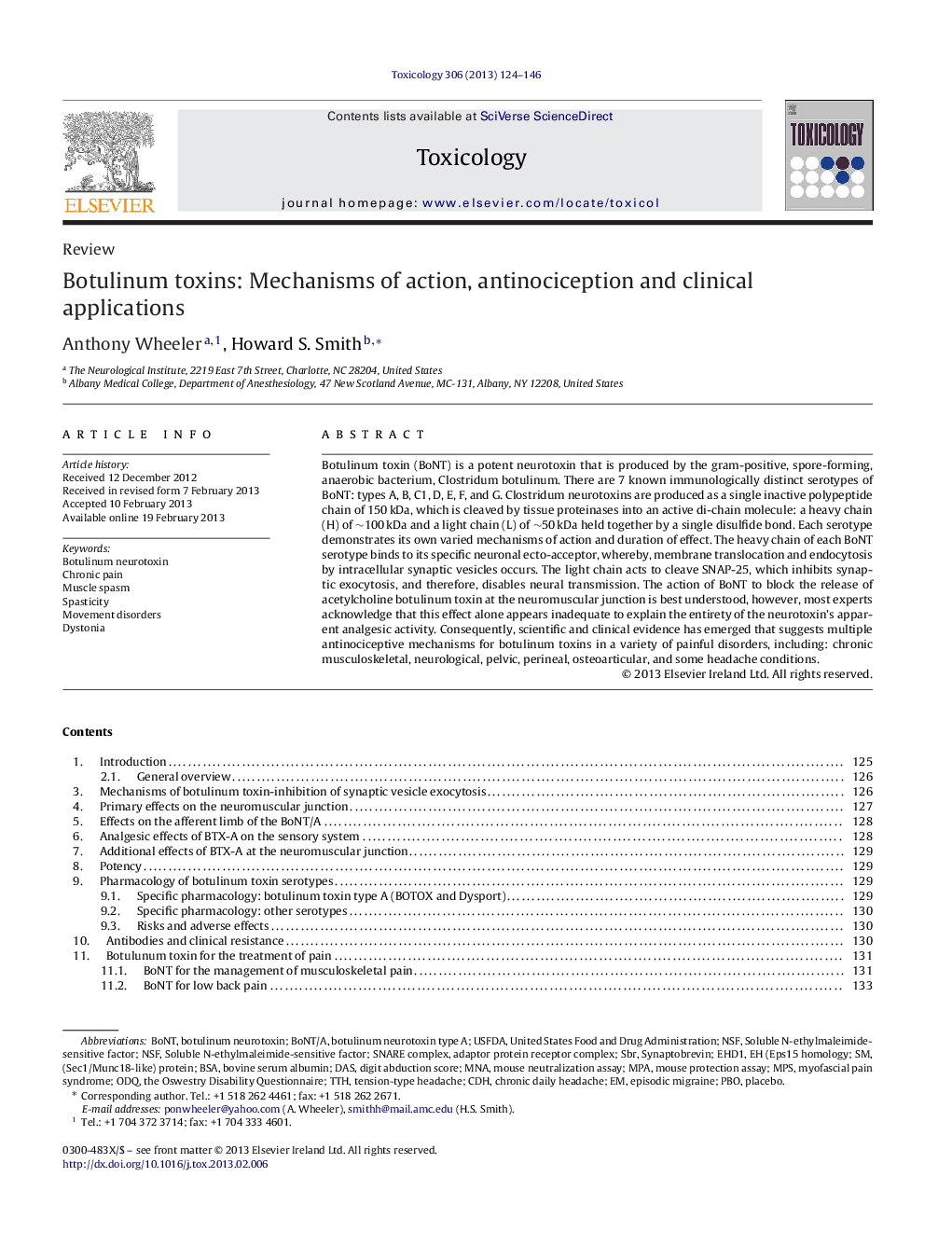| Article ID | Journal | Published Year | Pages | File Type |
|---|---|---|---|---|
| 5859339 | Toxicology | 2013 | 23 Pages |
Abstract
Botulinum toxin (BoNT) is a potent neurotoxin that is produced by the gram-positive, spore-forming, anaerobic bacterium, Clostridum botulinum. There are 7 known immunologically distinct serotypes of BoNT: types A, B, C1, D, E, F, and G. Clostridum neurotoxins are produced as a single inactive polypeptide chain of 150Â kDa, which is cleaved by tissue proteinases into an active di-chain molecule: a heavy chain (H) of â¼100Â kDa and a light chain (L) of â¼50Â kDa held together by a single disulfide bond. Each serotype demonstrates its own varied mechanisms of action and duration of effect. The heavy chain of each BoNT serotype binds to its specific neuronal ecto-acceptor, whereby, membrane translocation and endocytosis by intracellular synaptic vesicles occurs. The light chain acts to cleave SNAP-25, which inhibits synaptic exocytosis, and therefore, disables neural transmission. The action of BoNT to block the release of acetylcholine botulinum toxin at the neuromuscular junction is best understood, however, most experts acknowledge that this effect alone appears inadequate to explain the entirety of the neurotoxin's apparent analgesic activity. Consequently, scientific and clinical evidence has emerged that suggests multiple antinociceptive mechanisms for botulinum toxins in a variety of painful disorders, including: chronic musculoskeletal, neurological, pelvic, perineal, osteoarticular, and some headache conditions.
Keywords
Related Topics
Life Sciences
Environmental Science
Health, Toxicology and Mutagenesis
Authors
Anthony Wheeler, Howard S. Smith,
